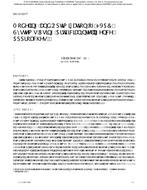This paper presents an extension of the standardizedIndustry Foundation Classes (IFC), in order to capturethe input data required for performing pedestriansimulations. Pedestrian simulations can identifypotential threats already in the design phase of abuilding and evaluate protective measures. The BIMmodel serves as a central structure, which is going to beoptimized by simulations (cf. figure 1). The buildingdesign is validated by a pedestrian simulation againstperformance indicators like the overall evacuation timeor densities inside congestions. In order to improve thecorresponding performance of the building, thesimulator can automatically optimize relevant featuresof the BIM model – like door openings and wavebreakers. After a review by the architect or engineer,the changes can be directly transferred to the model.Pedestrian streams turned out to be a limiting factor forbuilding safety, particularly regarding emergencyevacuation and the capacity of critical elements likestairways, escalators and elevators.Figure 1: Building design supportedby pedestrian simulationsIn addition, the pedestrian model can utilizeinformation of the BIM model during operation. Forexample, in case of a fire, the simulator imports theposition of the fire detectors from the model, queries itsstate from the Building Management System, and inturn can calculate safe egress routes for the occupants.
Citation: ASHRAE/IBPSA-USA Bldg Simulation Conf, Atlanta, GA, Sept 2014
Product Details
- Published:
- 2014
- Number of Pages:
- 8
- File Size:
- 1 file , 4.7 MB
- Product Code(s):
- D-BSC14-54


